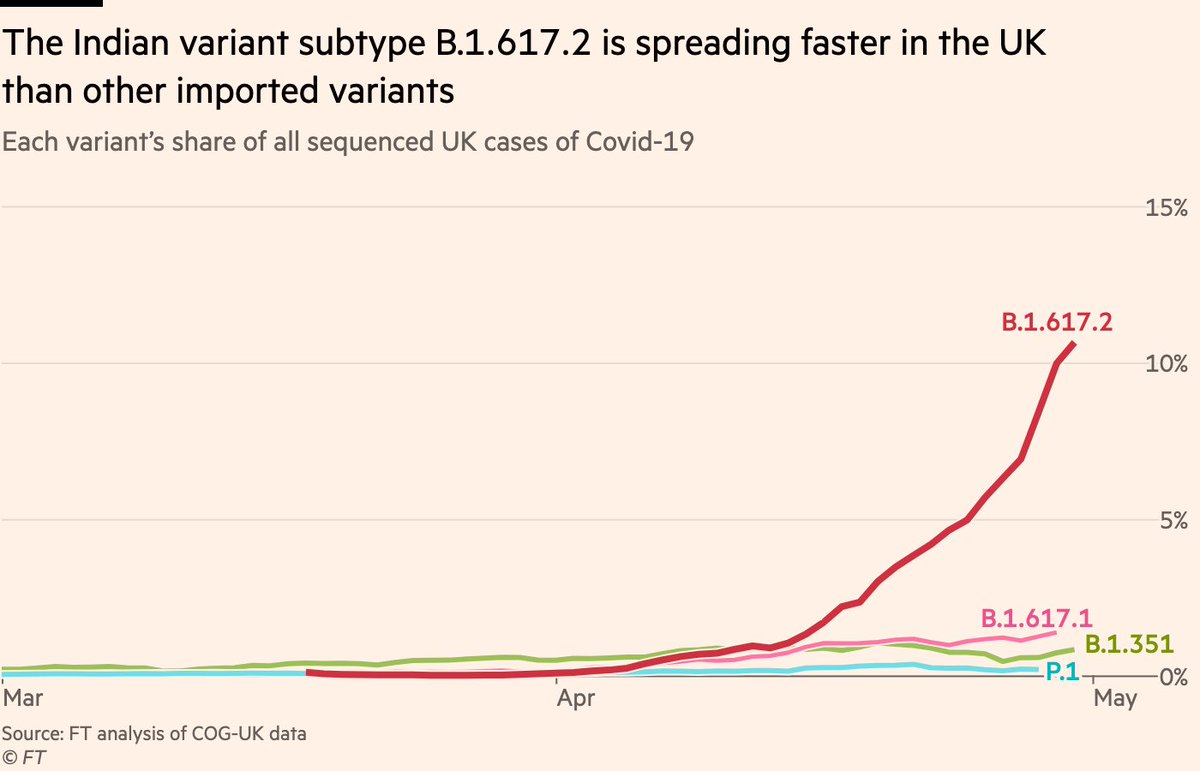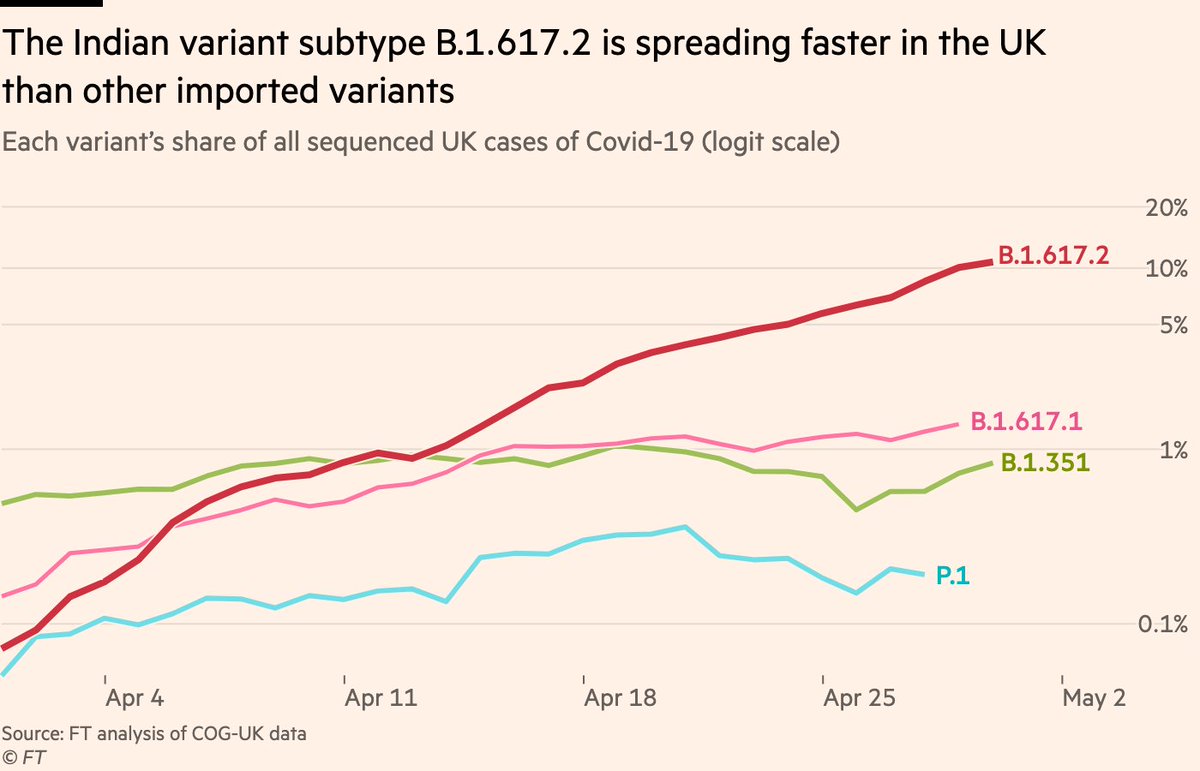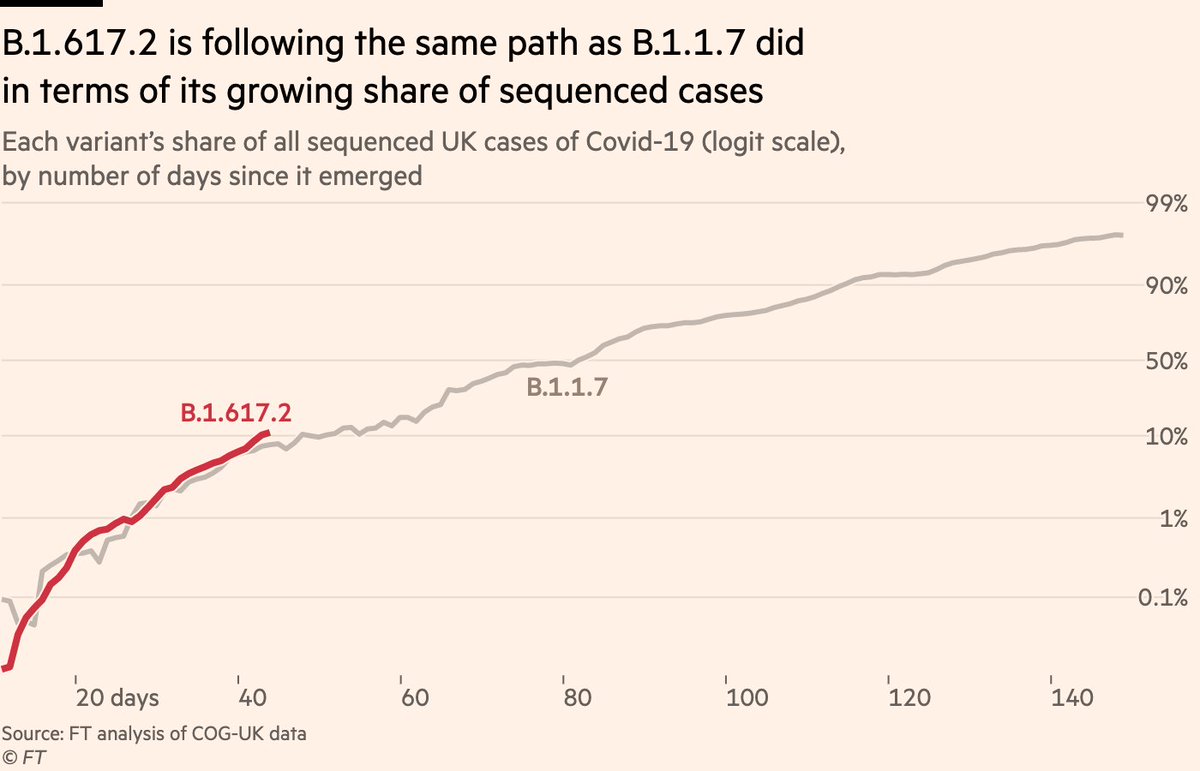
Good, measured thread from @JamesWard73 as ever.
If B.1.617.2 does prove to be more transmissible, we may need to keep things like indoor masking and tests for entry to large events for a while beyond June 21.
If B.1.617.2 does prove to be more transmissible, we may need to keep things like indoor masking and tests for entry to large events for a while beyond June 21.
https://twitter.com/jamesward73/status/1393932001271554049
My thoughts:
• No, that wouldn't mean "lockdown never ends". No, it wouldn't be curtailing freedom. It would be a very small compromise for a very large benefit
• As vaccination rates continue to climb further into the year, those few remaining measures could then be eased
• No, that wouldn't mean "lockdown never ends". No, it wouldn't be curtailing freedom. It would be a very small compromise for a very large benefit
• As vaccination rates continue to climb further into the year, those few remaining measures could then be eased
• It's still entirely possible any transmissibility advantage will prove to be much smaller than some have estimated. In that event, June 21 plans can proceed as planned
To sum up: it's possible that if the Indian variant is moderately more transmissible than B.1.1.7, we may need to keep some light-touch measures in place slightly longer than planned. That doesn't derail summer in my book.
• • •
Missing some Tweet in this thread? You can try to
force a refresh










